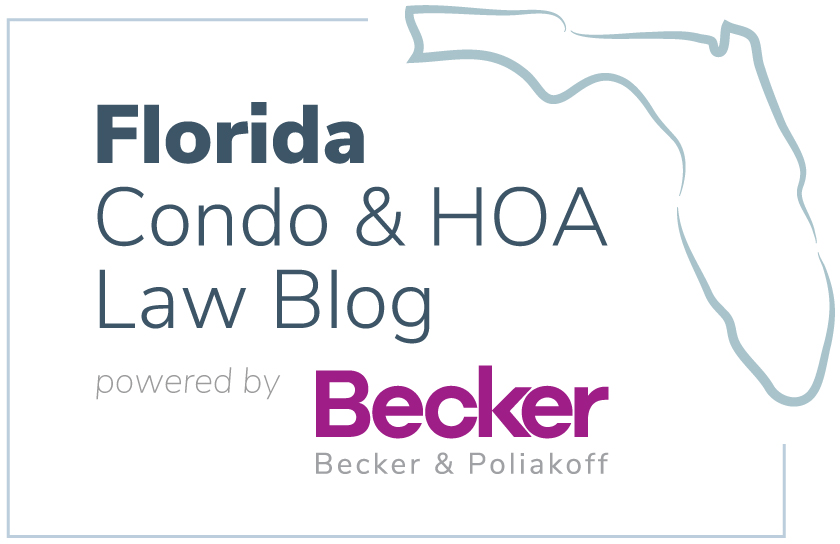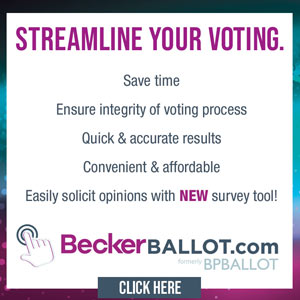
Service providers often cause property damage in community associations. Imagine a furniture delivery driver in a rush to make his next appointment, clipping your community’s security gate and taking a portion of it down the road, or a garbage truck leaking hydraulic fluid on your community roadways, leaving permanent stains. What should your association do when such damages occur? There is no perfect answer, but this guide may help your association navigate a run-in with vendor-caused property damage.
- Document the Damage
In all likelihood property damage will be covered, in some capacity, by insurance. For this reason, it is imperative to document as much of the accident scene as possible. Photo and/or video evidence of the damage will allow your association to eventually put a tangible representation of the event in front of the party whom you are seeking financial compensation from. This documentation will only aid in your ability to recover for legitimate damages; the more you have, the better off your association will be. To this end, your association may want to consider implementing a written procedure outlining the actions to be taken by association personnel and the documentation to be gathered in the event of a damage-causing accident.
- If Vehicles are Involved, File a Crash Report
If a vehicle is involved, it is important to file a crash report. This goes back to documenting the damage-causing event. Every piece of evidence you capture will only support your claim, which in-turn will place your association in the best position to restore its damaged property with as little out-of-pocket cost as possible.
Another key benefit of filing a crash report is that it ensures you will obtain the vendor’s insurance information. Once on scene, the responding officer will collect this information, and other relevant evidence, including witness statements. Even if a crash report is not filed, your association should still make reasonable efforts to collect this important information.
- Notify Your Association’s Carrier
Although your association may not want to immediately file a claim with its own insurance carrier, it is important to put your own carrier on timely notice of the event as the vendor or its insurer may reject your claim for damages. By notifying your association’s own carrier, your community will establish the groundwork for a potential first party claim if necessary. In fact, many times your carrier may pay for the damages and then pursue the vendor separately. In addition, your own carrier may have to step-in if the vendor attempts to place some level of fault on the association. An illustration of this would be a vendor claiming negligent maintenance of a roadway, allegedly causing the vendor to crash into one of your community’s common structures.
- Obtain a Proposal for Repairs
Once your association is in the adjustment process, it will be useful to have a written estimate from an independent contractor. A repair proposal provides ammunition in the negotiation process because it allows your association to present evidence of someone willing and able to repair the damage and the amount it will cost to do so.
- Negotiate
The next step in the process is in many ways out of your association’s control because it depends on the actions of the vendor. If the vendor does not file a claim with its insurer, your association will be left with two primary options: (i) file a claim with its own carrier or (ii) seek damages from the vendor through the legal system. However, if the vendor is a professional entity, it is likely they will file a claim with their insurance carrier.
Once the vendor files a claim, a negotiation process is likely to begin. This process should be handled in a similar fashion to a first party claim against your association’s own insurer; which is why it is critical to document the damage-causing event and obtain as much evidence as possible. The vendor’s carrier will adjust the claim by identifying the extent of the damage and offering an amount based on its assessment. In many cases, the first offer from the carrier will be much lower than the amount of damage sustained.
If the carrier’s first settlement offer is unacceptable, maintain an amicable and pragmatic relationship with the other side when disputing the offer. Your association should also comply with reasonable requests for documentation and maintain a productive line of communication. Without providing this information, the vendor’s carrier and its adjuster will likely argue that they do not have the necessary information to properly adjust or settle the claim for the amount your association is seeking.
- No Results – Contact Your Association’s Attorney
Your association should always seek the advice of legal counsel when these incidents occur, but especially if your association is unable to make effective progress with the vendor’s carrier during settlement negotiations or it has become apparent the carrier is acting in bad faith. A qualified attorney versed in association and insurance law will be able to navigate your association through the settlement process, and if necessary, can advise on further negotiations, other dispute resolution processes, or even litigation. Regardless of the legal path chosen, your association will now have the framework to build a stronger case against unwanted vendor damages.
In conclusion, no one wants to find themselves suffering property damage through the conduct of another. However, if these unfortunate events do occur in your community, having a plan on how to proceed will help prevent a bad situation from becoming worse.






Recent Comments